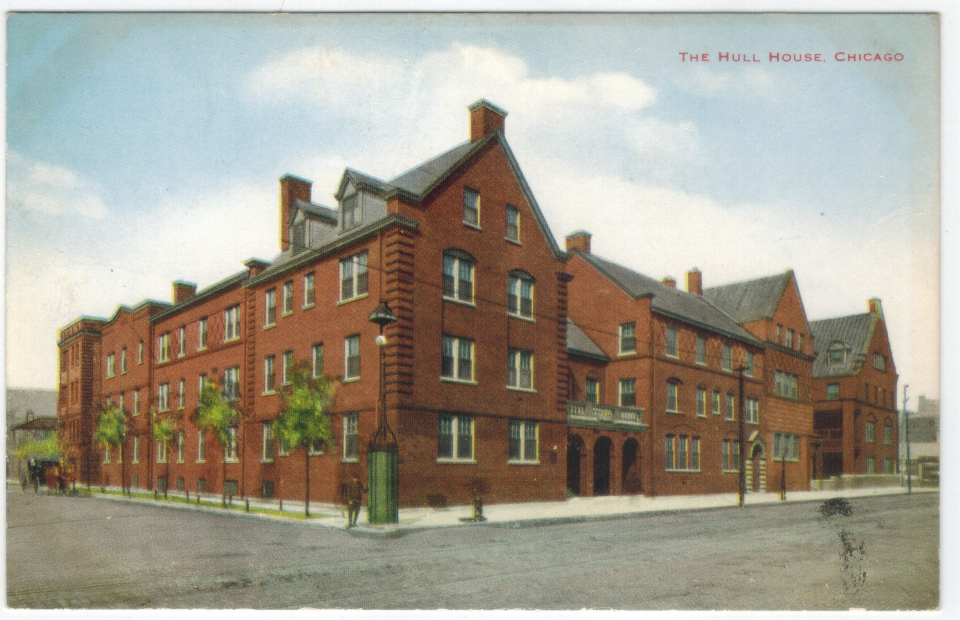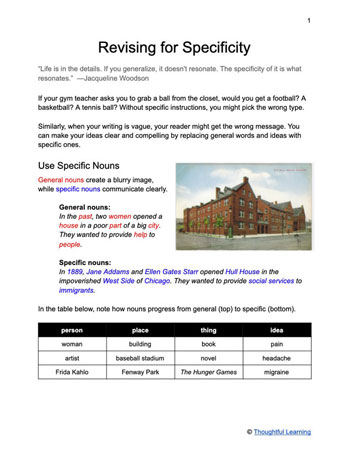
“Could you be more specific?” Teachers love to ask this question, and for good reason. It encourages students to clarify their thinking with specific answers rather than generalities.
Students should ask this same question while they write. Without concrete details, writing falls flat. Vague ideas cause dull reading and misunderstanding. Specific details build interest and understanding.
Featured Activity: Revising for Specificity
Students will write clearer and livelier pieces when they replace general details with specific alternatives. This activity teaches two ways of doing so.
Download the PDF or copy the Google Doc.
Teacher Support
Consider this support as you implement the lesson.
Level
5–9
Learning Objectives
By completing this activity, students will . . .
- Strengthen their writing through revising.
- Use precise nouns to explain a topic.
- Develop an idea with relevant facts, explanations, definitions, examples, quotations, or other information.
- Respond to a peer's writing.
Teaching Tips
- Present your class with a few sample sentences with nonspecific language. Ask students to point out the general words or ideas. Then, work as a class to find specific alternatives.
- Lead a discussion about when a general word or idea can work in writing. For example, a writer might make a general claim and then support it with specific details.
- Show another piece of writing. Ask students why the writer may have used a specific noun in one place but not another. These discussions will help students become more intentional about the choices they make when writing and revising.
- Extend your general/specific discussion with activities on using sensory details and choosing vivid verbs. These activities are especially helpful during narrative writing units.
- Assign "Enrichment: Get Peer Support" from the end of the download activity. The best way for students to understand their readers’ views of their writing is through peer revision.
